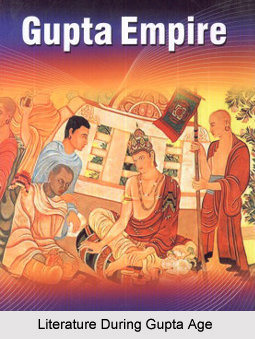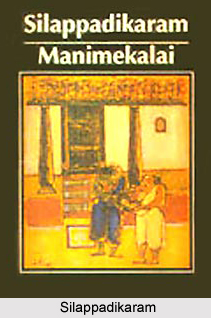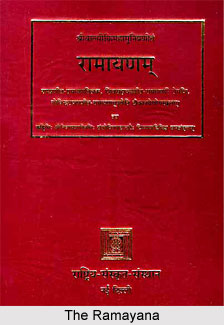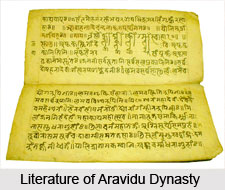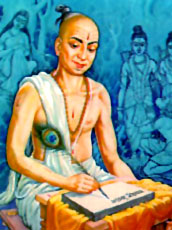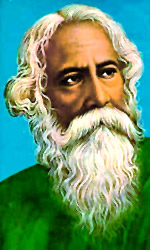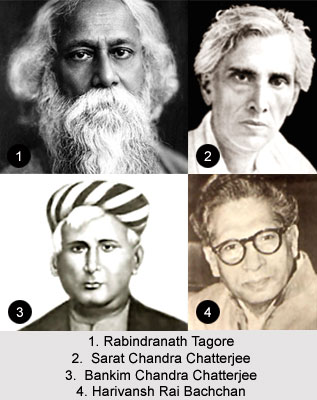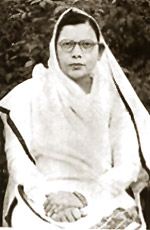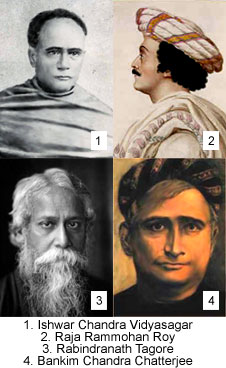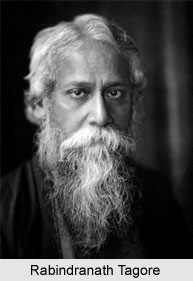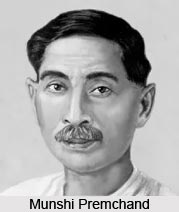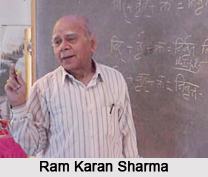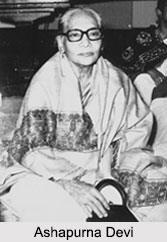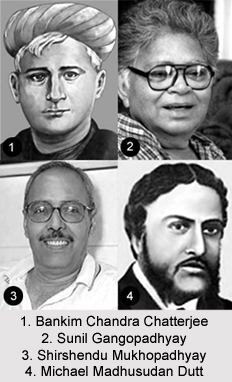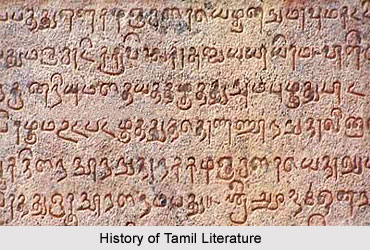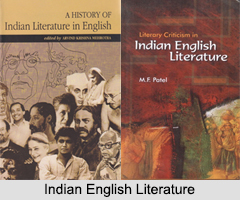Introduction
'Bye, Bye Blackbird' by Anita Desai is a psychological analysis of the immigrants who suffer a mixed feelings of love and hate towards the country of their adoption. In ‘Bye, Bye Blackbird,’ the author Anita Desai deals with the East-West encounters. ‘Blackbird’ used in the title is none other than the immigrant, whom London says goodbye. Desai highlights the physical and psychological problems of Indian immigrants and explores the adjustment difficulties that they face in England. The author gives beautiful descriptions of the busy city life in London and the quite retired life in countryside, which is totally opposite to one another. The characters are not so real, but their inner conflicts and crisis remain the same that every immigrant undergoes.
Synopsis of Bye, Bye Blackbird
This story by Anita Desai is set against England’s green landscape, enigmatic and attractive to some while depressing and nauseating to others. ‘Bye-Bye Black Bird’ explores the lives of the outsiders seeking to forge a new identity in an alien society. The blackbirds here are the immigrants. Anita Desai delves deep into the psyche of her characters. The writer aims at the truth, and that is the keyword of her success. ‘Bye-Bye Blackbird’ examines the plight of Indian immigrants in London. The book is divided into three parts - Arrival, Discovery and Recognition, and Departure. Dev, the main character of the book, arrives in England for higher studies. He stays with Adit Sen and his English wife, Sarah. Dev gives up the idea of studying and starts looking for a job. Unable to find any, he thinks of returning to India. But it is well-settled Adit who decides to leave London.
Meanwhile, Dev manages to find a job and stays back. In this
novel the common problem of England ‘Racism’ is shown widely. The treatment
meted out to Indians disturbs Dev. He hates being called a ‘Wog’, as most Indians
or Asian are called and humiliated in public and private places. England is
said to be full of Asians, but Dev’s visit to countryside changes his attitude
towards England. As for Adit, he finds himself living in a ‘little India’ in
London. He loses his former rock-solid mental and emotional balance, while Adit’s
English wife Sarah feels like claiming a life and an identity that she never
owned.
Being published by the Orient Paperbacks ‘Bye, Bye Blackbird’ is a masterpiece novel
by the author Anita Desai where she critically analyzes the love-hate
relationship of the immigrants and explores every phase of the psychological
journey of an Asian immigrant in a western country.
Plot of Bye, Bye Blackbird
The story gains momentum when the trio set out for a week in the English countryside of Dorset, where Sarah’s parents live a quiet, retired life. During their stay, they are joined by two of Adit’s Indian friends, one accompanied by his Indian wife. This week-long immersion in the traditional English rural lifestyle, so unlike London’s bustling, diverse, and cosmopolitan atmosphere, profoundly affects both Adit and Dev. Adit, who once believed he had reconciled with English culture, begins to feel estranged, particularly by the reserved and distant manners of his in-laws. In contrast, Dev, who had previously shown little interest in England, becomes captivated by the beauty and tranquility of the southern landscape and moved by the genuine warmth and kindness of the people.
Back in London, Adit gradually distances himself from England and begins to embrace a somewhat idealized and distorted sense of “Indian-ness.” His nostalgia deepens, often bordering on melancholy, and the news of India’s war with Pakistan unsettles him further, turning him into a fervent patriot through a series of long-distance phone calls. His transformation reaches its peak when he resolves to return to India for good. Though hesitant and pregnant with their first child, Sarah agrees to accompany him, sacrificing her well-paid job in the process.
In the final scene, Adit and Sarah stand on the platform at
Waterloo Station, ready to board a train to Southampton, from where they will
sail to Bombay. Dev, now living in their flat, has come to see them off. Anita
Desai poignantly captures his turmoil: “Dev stood silent, watching, for the
most complex feelings of all tumbled and tossed inside him, clamouring for
attention, for resolution. If plans and prophesies had any strength in them at
all, it would have been he steaming out on the train to catch the boat back to
India. This was what he had planned and, for some time, sincerely believed…Why
was it Adit who was leaving and he who stayed on?”
Themes of Bye, Bye Blackbird
‘Bye, Bye Blackbird’ portrays different aspects of human psyche, each highlighting a theme in the novel. Whether its nostalgia, confusion or racism, the novel has successfully painted a real picture of human mind through the behavior of the characters.
Alienation
Alienation is the novel’s central theme, suggested even in
its title. It is the immigrant experience and the deep sense of alienation that
accompanies it. When Anita Desai wrote this book, the term “diaspora
experience” had yet to gain currency, yet she captures its emotional complexity
with striking clarity. Adit, the settled immigrant and self-proclaimed
Anglophile married to an English woman, often drifts into nostalgic dreams of
Calcutta, imagining himself listening to sitar music while his mother dresses
Sarah in gold-threaded saris. His yearning reflects what scholars later termed
the “root phenomenon,” where individuals in exile construct an idealized
version of the homeland they left behind.
Dev, the newly arrived Anglophobe, faces his own struggle with displacement. In England, he is unsettled by the quietness and emotional distance between people. Back at home, he would have known his neighbours by name and shared in their daily rhythms. Yet Desai deepens this theme of alienation by showing how both men’s certainties unravel. Adit, who once believed himself “half-English,” finally admits that it was only a façade. Dev, despite his initial disdain for all things English, discovers a sense of comfort and familiarity in a local pub and grows to admire the serenity of the English countryside.
Sarah, the third figure in this intricate triangle, embodies alienation from the opposite perspective. English by birth, she is bound to India through love, married to an Indian man, drawn to Indian food and music, and increasingly aware of her parents’ emotional coldness. When she decides to accompany Adit back to India, pregnant with their first child, she begins to wonder what cultural identity her child will inherit. Once in India, Sarah is destined to face the same kind of cultural dislocation and identity conflict that Adit and Dev have endured.
Confusion
For all three characters, confusion emerges as the most
visible symptom of their alienation. Adit and Dev, in particular, struggle to
express their shifting emotions as they navigate between two worlds. Sarah
initially appears more grounded, observing the two men wrestle with their inner
turmoil. Yet even she becomes conflicted when she recognizes the quiet
prejudice her own parents display toward her husband.
Desai captures the complexity of Dev’s confusion with remarkable sensitivity: “In this growing uncertainty, he feels the divisions inside him divided further, and then re-divided once more.” Through this inner turbulence, Desai portrays confusion not as mere indecision, but as the inevitable condition of those caught between identities, constantly re-evaluating where they belong and who they truly are.
Racism
While Desai’s portrayal of alienation and cultural
dislocation is nuanced and empathetic, she does not shy away from exposing its
underlying cause—racism toward immigrants from Asian countries. Set against the
backdrop of 1950s and 1960s England, the novel unfolds during a period of
rising immigration from former British colonies. Though the government
initially encouraged this influx to offset wartime population losses, many
ordinary citizens, accustomed to seeing themselves as an insular island nation
that had triumphed over Napoleon and Hitler, responded with fear and hostility.
Anti-immigrant sentiment spread through pubs, streets, and even political
discourse, creating an atmosphere of resentment and exclusion.
Within this context, Adit and Dev’s encounters in England
reveal the everyday face of racism. Adit is once taunted by a schoolboy who
calls him a “wog,” a term that, despite its seemingly polite origin (“white
oriental gentleman”), carries a vicious sting through its association with
“dog.” On another occasion, while walking down a street, they overhear a woman
sneer, “This place is littered with Asians now. Must get someone to clear them
out.” In yet another moment, Adit is angrily labeled “a bloody Paki” for
failing to close his umbrella quickly enough on a bus. A moment in the novel
also highlights that even shared pleasures turn bitter- while Adit and Sarah
enjoy Indian music on a pub jukebox, a man shouts, “Shut it off, will ya? Where
d’you think you are, eh?”
Characters of Bye, Bye Blackbird
Dev, Adit, and Sarah are the main characters of Anita Desai’s novel “Bye, Bye Blackbird” while other characters like Bella and Miss Moffatt played crucial roles.
Dev
Dev represents the newly arrived immigrant who is young,
idealistic, and intent on earning a degree before returning home. Staying with
Adit and Sarah, he quickly becomes critical of Adit’s lifestyle, which he
interprets as a form of quiet surrender to an inferior status in post-Imperial
Britain. Unlike Adit, however, Dev shows little motivation toward his studies
and struggles to find his footing in a culture vastly different from his native
Bengal.
His early days in England are marked by discomfort and disillusionment, compounded by encounters with casual racism and condescension that deepen his sense of alienation. Yet, a week spent in the calm, picturesque countryside of Dorset subtly alters his perspective. Immersed in the beauty of rural England and touched by the quiet decency of its people, Dev begins to see the country in a new light. By the novel’s end, the man who once resented England has come to believe he might, after all, make it his home.
Adit
Adit is an educated Bengali man who, after earning a degree
in the United Kingdom, finds limited career opportunities in India and decides
to return to England to build his future. There, he takes a modest job with a
travel agency and marries Sarah, an English woman. For a time, Adit appears
comfortably assimilated into British life, content with his routine and
convinced of his belonging.
However, the arrival of Dev, whose sharp awareness of racial prejudice challenges Adit’s complacency, begins to unsettle him. Their subsequent visit to the English countryside, where Adit quietly endures the restrained yet palpable prejudice of Sarah’s parents, deepens his sense of estrangement. Gradually, his certainty about life in England gives way to disillusionment. In the novel’s closing moments, Adit and Sarah stand poised to leave England behind, bound for an uncertain future in India, a return that is more emotional than geographical.
Sarah
Sarah, the English woman who marries Adit, is young,
independent, and professionally successful. Drawn to Indian culture and deeply
in love with her husband, she nevertheless finds herself struggling to bridge
the cultural divide between them. Though she often appears reserved and
compliant, allowing Adit to take the lead in their decisions, Sarah possesses a
quiet resilience and inner strength that occasionally surfaces in unexpected
ways, revealing her depth and determination beneath her gentle exterior.
Bella
Bella, the wife of Adit’s Punjabi friend Samar, is lively,
outgoing, and far more carefree than Sarah. Her extroverted nature and easy
charm make her a contrast to the more reserved characters around her. Yet,
beneath her sociable exterior, Bella embodies a subtle contradiction, though
she identifies with Indian roots through her marriage, she has also absorbed
many English attitudes, including an undercurrent of latent racial prejudice
that occasionally surfaces in her behaviour.
Miss Moffatt
A minor yet memorable character, Emma Moffatt is the
landlady who owns the flat Adit rents and later shares with Sarah. Described as
“living at the top of the house like an aged mouse,” she leads a quiet,
solitary life. Despite her timid demeanor, Miss Moffatt harbors a deep
fascination with Indian culture, particularly the country’s literature, revealing
a gentle curiosity that sets her apart from the more insular attitudes around
her.
About Anita Desai
The prolific writer Anita Desai was born on 24th June 1937. In her literary career she has won the Winifred Holtby Memorial Prize for her novel ‘Fire on the Mountain’ and her children’s book ‘The Village by the Sea’ won the Guardian Children`s Fiction Award. Anita Desai is known for her sensitive portrayal of the inner feelings of her female characters. Many of Anita Desai’s novels explore tensions between family members and the alienation of middle-class women. She is a very explicit writer covering the nitty-gritty of human relationships as well as female involvement in the family.
n her later novels, Anita Desai has taken up subjects on varied themes such as German anti-Semitism, the demise of traditions, and Western stereotypical views of India. She is an excellent writer and winner of numerous awards. She started her writing career at the age of nine. Though she was fluent in German, Hindi, English and Bengali, she started writing in English only. In present days, Anita Desai is a Fellow of the ‘Royal Society of Literature,’ the ‘American Academy of Arts and Letters,’ Girton College, Cambridge and Clare Hall, Cambridge. Anita lives in the United States, where she is the John E. Burchard Professor of Writing at Massachusetts Institute of Technology, Cambridge.
‘Bye, Bye Blackbird’ by Anita Desai talks something more than life. She set the
background of the story in England, the feelings and sufferings of the Indians
at that place. All through she has shown some sort of identity crisis, which
the characters of the novel suffer. All of them were not happy and were
searching something else. The readers will find a kind of resemblance with
their own life who stays outside India in true sense. This is a work by Anita
Desai that touches the heart with a pinch of sourness.



